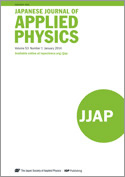
JAPANESE JOURNAL OF APPLIED PHYSICS
Scope & Guideline
Bridging Theory and Practice in Physics
Introduction
Aims and Scopes
- Materials Science and Engineering:
Research in this area includes studies on the synthesis, characterization, and application of novel materials, particularly semiconductors, dielectrics, and ferroelectrics, with a strong emphasis on their electronic, optical, and thermal properties. - Nanotechnology and Nanoscale Devices:
This scope covers the design, fabrication, and application of nanoscale devices, including quantum dots, nanowires, and two-dimensional materials, with a focus on their unique properties and potential applications in electronics, photonics, and sensing. - Photonics and Optoelectronics:
Research related to the development and characterization of optoelectronic devices, including light-emitting diodes, lasers, and photovoltaic cells, focusing on their performance, efficiency, and integration into practical systems. - Plasma Physics and Applications:
This area encompasses studies on plasma generation, diagnostics, and applications in various fields, including semiconductor processing, surface modification, and environmental remediation. - Ferroelectric and Piezoelectric Materials:
Research into the properties and applications of ferroelectric and piezoelectric materials, including their use in sensors, actuators, and memory devices, with a focus on enhancing their performance through material design. - Electronic Devices and Circuits:
Studies on the design, simulation, and characterization of electronic devices such as transistors, diodes, and integrated circuits, with a special emphasis on high-performance and low-power applications.
Trending and Emerging
- Emerging Energy Materials:
There is an increasing focus on materials for energy applications, including photovoltaics, thermoelectrics, and battery technologies, driven by the global demand for sustainable energy solutions. - Quantum Technologies:
Research related to quantum computing and quantum information is on the rise, with numerous studies exploring the properties and applications of quantum dots, superconducting circuits, and spintronic devices. - Advanced Characterization Techniques:
Papers employing advanced characterization techniques, such as synchrotron radiation, electron microscopy, and atomic force microscopy, have gained traction, as these methods are crucial for understanding material properties at the nanoscale. - Plasma Processing Innovations:
The field of plasma processing has seen growth, particularly in applications for semiconductor manufacturing and surface treatment, reflecting the industry's need for efficient and precise fabrication techniques. - Hybrid and Flexible Electronics:
Research into hybrid and flexible electronic devices is emerging, with increasing interest in integrating organic materials with traditional semiconductor technologies for applications in wearable devices and soft robotics.
Declining or Waning
- Conventional Semiconductor Technologies:
There has been a noticeable decrease in the number of papers focusing solely on traditional semiconductor technologies, such as bulk silicon devices, as research increasingly shifts towards novel materials and structures that leverage advanced properties. - Basic Theoretical Studies:
The journal has seen a reduction in publications that are purely theoretical without experimental validation. There is a growing preference for studies that combine theory with practical applications or experimental results. - Low-Dimensional Quantum Structures:
Research focusing on low-dimensional quantum structures, while still present, has decreased in comparison to the surge in studies on two-dimensional materials and their applications in flexible and wearable electronics.
Similar Journals

CHINESE JOURNAL OF LASERS-ZHONGGUO JIGUANG
Unveiling the Power of Light in ResearchCHINESE JOURNAL OF LASERS-ZHONGGUO JIGUANG is a premier academic publication dedicated to the fields of Atomic and Molecular Physics, Optics, and Electrical and Electronic Engineering. Established in 1991 and published by the esteemed CHINESE LASER PRESS, this journal serves as a crucial platform for researchers, professionals, and students to disseminate significant findings and innovations in laser technology and applications. With its consistent Q3 ranking in the respective categories, the journal is recognized for contributing valuable insights into electronic, optical, and magnetic materials, as well as advancing the understanding of laser phenomena. Although open access options are not available, the journal remains committed to fostering academic discourse and enhancing the visibility of groundbreaking research within and beyond China. The periodical is not only pivotal for those engaged in laser science but also for interdisciplinary studies that intersect with physics and engineering, making it an essential resource for contemporary scholars.
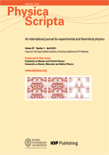
PHYSICA SCRIPTA
Fostering Collaboration for a Brighter Scientific FuturePHYSICA SCRIPTA, established in 1970 and published by IOP Publishing Ltd, is a prestigious journal dedicated to the broad fields of physics, encompassing topics such as atomic and molecular physics, condensed matter physics, and mathematical physics. With an impressive commitment to advancing scientific knowledge, it holds a significant standing in the academic community, evidenced by its Q2 and Q3 rankings across various categories in 2023. The journal is instrumental for researchers, professionals, and students seeking to disseminate and engage with high-quality research, fostering collaboration and innovation within the field. Although it currently does not offer open access options, its robust editorial standards ensure the dissemination of impactful studies, contributing to its rising citation metrics. Published from the United Kingdom, PHYSICA SCRIPTA continues to be a vital resource for contemporary developments in physics, paving the way for future discoveries.

Frontiers of Physics
Transforming Theoretical Insights into Practical AdvancementsFrontiers of Physics, published by Higher Education Press, is a premier open-access journal dedicated to fostering innovative research and excellence within the field of physics. With an ISSN of 2095-0462 and an E-ISSN of 2095-0470, this rapidly growing journal has established itself as a valuable platform for disseminating cutting-edge findings, covering a diverse range of topics from theoretical frameworks to experimental advancements. Notably, Frontiers of Physics has achieved an impressive Q1 ranking in the 2023 Scopus Quartiles for Physics and Astronomy, securing a competitive 5th out of 81 positions in its category, reflecting a high impact factor that underscores its importance to the scientific community. Since its inception in 2011 and continuing through 2024, the journal aims to bridge the gap between academia and industry, encouraging collaboration among researchers, professionals, and students alike. Its commitment to open access ensures that high-quality research is readily accessible, thereby promoting knowledge sharing and advancement in the global physics community. Explore the potential of your research in Frontiers of Physics, where the future of physics flourishes.

Journal of Semiconductor Technology and Science
Connecting Minds in Semiconductor AdvancementsThe Journal of Semiconductor Technology and Science, published by the IEEK PUBLICATION CENTER, serves as a vital platform for advancing the field of semiconductor technology and materials science. With its ISSN 1598-1657 and E-ISSN 2233-4866, this journal has been pivotal since its inception in 2005, continuing to shed light on innovative research until 2024. Although currently classified in the Q4 category for both Electrical and Electronic Engineering and Electronic, Optical and Magnetic Materials, it remains a crucial resource for those in industry and academia alike, providing in-depth analyses and findings that explore the complexities of semiconductor applications. Researchers and professionals will find value in its comprehensive articles that address current trends and future directions in semiconductor technologies. This open-access journal, published in South Korea, is positioned to foster collaboration among students, professionals, and leading researchers in the ever-evolving technology landscape.
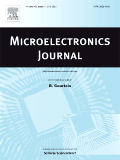
MICROELECTRONICS JOURNAL
Pioneering Discoveries in Microelectronics and BeyondMICROELECTRONICS JOURNAL, published by Elsevier Sci Ltd since 1974, serves as a pivotal platform for disseminating cutting-edge research in the realms of microelectronics, nanotechnology, and materials science. With editions spanning from 1974 to 2024, the journal is well-respected within the scientific community, boasting a strong presence in key categories such as Atomic and Molecular Physics, Condensed Matter Physics, and Electrical and Electronic Engineering, as evidenced by its Q3 ranking in 2023. Researchers and professionals engaged in the exploration of electronic materials, optical applications, and nanoscale innovations can greatly benefit from the journal's insights, which situate their work within a robust academic framework. Although the journal does not currently offer open access, its rigorous peer-review process and high visibility in Scopus rankings—including a percentile ranking of 58th in Condensed Matter Physics—make it an essential resource for anyone looking to stay at the forefront of advancements in microelectronics and related fields.
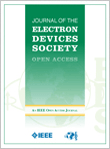
IEEE Journal of the Electron Devices Society
Pioneering Research in Electron Device EngineeringIEEE Journal of the Electron Devices Society is a premier open-access publication dedicated to the advancement of knowledge in the field of electron devices. Published by the IEEE Institute of Electrical and Electronics Engineers Inc, this journal has been contributing essential research to the scientific community since 2013, reflecting its commitment to fostering innovation and development in the industry. With a notable impact factor that places it in reputable category quartiles—Q3 in Biotechnology and Q2 in both Electrical and Electronic Engineering and Electronic, Optical, and Magnetic Materials—this journal stands as a respected outlet for cutting-edge studies. Positioned among the top-ranked journals in its respective categories, including a Scopus rank of #90 in Electronic, Optical and Magnetic Materials, it serves as a vital resource for researchers, professionals, and students alike. The open-access model enhances the journal's accessibility, allowing for widespread dissemination of crucial findings and innovations in electron device technologies. Whether you are engaged in academia or industry, the IEEE Journal of the Electron Devices Society is essential for remaining at the forefront of advancements in this dynamic field.

JOURNAL OF OPTOELECTRONICS AND ADVANCED MATERIALS
Innovating Tomorrow's Technologies Through ResearchJOURNAL OF OPTOELECTRONICS AND ADVANCED MATERIALS, published by the NATL INST OPTOELECTRONICS in Romania, is an esteemed academic journal dedicated to disseminating innovative research in the fields of optoelectronics and advanced materials. With an ISSN of 1454-4164 and E-ISSN 1841-7132, the journal provides a platform for researchers to share their findings and technological advancements from 1999 to 2024. Despite being placed in the Q4 quartile across several categories—including Atomic and Molecular Physics, Condensed Matter Physics, and Electrical and Electronic Engineering—the journal serves as an essential resource for highlighting significant developments in its respective fields. Researchers and professionals may find valuable insights that foster collaboration and inspire further investigation, thereby contributing to the continuous evolution of optoelectronics and materials science.
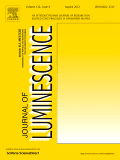
Journal of Luminescence
Illuminating the Frontiers of ScienceThe Journal of Luminescence, published by ELSEVIER, is a leading interdisciplinary journal focused on the exploration of luminescence phenomena and applications across various scientific fields. Established in 1970, this prestigious journal has made significant contributions to the realms of Atomic and Molecular Physics, Biochemistry, Biophysics, Chemistry, and Condensed Matter Physics, as evidenced by its commendable Scopus rankings and category quartiles. As of 2023, it holds a Q2 ranking in multiple categories, indicating a robust impact in the community. The journal serves as a vital platform for researchers, professionals, and students alike, offering insights into the latest advancements in luminescence research and related applications, fostering innovation in both theoretical and experimental frameworks. The journal provides enriching content through its non-open access model, ensuring high-quality peer-reviewed research is accessible to those who prioritize impactful scholarly work. With a convergence period extending to 2025, the Journal of Luminescence continues to be an essential resource for those dedicated to the advancement of knowledge in the luminous sciences.
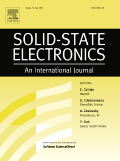
SOLID-STATE ELECTRONICS
Exploring the Depths of Solid-State InnovationsSOLID-STATE ELECTRONICS, published by Pergamon-Elsevier Science Ltd, is a highly regarded journal committed to advancing the field of solid-state physics and its applications. With an ISSN of 0038-1101 and an E-ISSN of 1879-2405, this journal has been a cornerstone of scholarly communication since its inception in 1960. Covering a rich spectrum of topics, it features in the Q3 category for Condensed Matter Physics, Electrical and Electronic Engineering, and Materials Science, reflecting its robust engagement in these critical fields. Despite not being an open-access journal, it provides valuable insights and research findings accessible to both academia and industry professionals, ensuring the dissemination of cutting-edge knowledge. With a strong focus on empirical research and theoretical developments, SOLID-STATE ELECTRONICS aims to bridge the gap between fundamental science and practical application, making it an essential resource for researchers, professionals, and students alike in the United Kingdom and beyond.

Lithuanian Journal of Physics
Illuminating Insights in Physics ResearchWelcome to the Lithuanian Journal of Physics, an esteemed publication helmed by the Lithuanian Physical Society, dedicated to advancing the field of physics and astronomy. Established in 2008 and continually publishing insightful research through 2024, this journal aims to provide a platform for high-quality scholarly articles that contribute to the understanding of various physical phenomena. With a steady presence in the academic landscape, the journal is currently ranked in the fourth quartile of the Physics and Astronomy category and is positioned at the 18th percentile in its Scopus ranking, reflecting its niche focus and accessibility for researchers and students alike. Although currently not operating under an open access model, the journal remains a vital resource for professionals seeking to stay informed on the latest developments in the field. The Lithuanian Journal of Physics invites contributions that inspire collaboration and innovation in physical sciences, making it an invaluable resource for the global scientific community seeking to expand knowledge within this dynamic field.